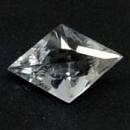|
ClassicGems.net |
|
|
 |
| Hyalite (variety of Opal) |
|
|
Discovery year unknown, first cited in 1794; IMA status: Not Valid (a variety) | |||
|
|
|
Chemistry |
|
|
| |
|
SiO2 · nH2O | |
|
|
Hydrated Silicon Dioxide |
|
|
|
|
More Information |
|
|
|
|
|
|
Hyalite
is a variety of Opal. |
|
Synonyms: |
Amiatite, Hyaline, Hyälith, Jalite, Lava Glass, Müller's Glass |
|
|
|
|
Physical Properties |
|
|
|
|
|
Globular and botryoidal masses and irregular crusts |
|
|
None observed |
|
|
Conchoidal |
|
|
Brittle |
|
|
5.5 - 6.5 |
|
|
1.9 - 2.2 (g/cm3); varies with water content |
|
|
Fluorescent; may show strong green fluorescence under SW UV light. |
|
|
Not Radioactive |
|
|
|
|
|
Optical Properties |
|
|
|
|
|
Colorless, white, creme-colored, yellow, orange; no opalescence (play of color) |
|
|
Transparent, translucent |
|
|
Vitreous, sub-vitreous |
|
|
1.44 - 1.46 |
|
|
0.000 (isotropic); may show strain birefringence (Graetsch, 1994) |
|
|
n/a |
|
|
None |
|
|
|
|
|
Occurances |
|
|
|
|
|
Geological Setting: |
In volcanic and pegmatite environments where the silica deposits from the gas phase. Volcanic vugs and fumaroles, pegmatite pockets. |
|
Type Locality: |
Unknown |
|
Year Discovered: |
Unknown; first cited in 1794. |
|
View mineral photos: | |
|
|
|
|
Unusual Gem Categories |
|
|
|
|
|
| |
|
|
|
|
More Information |
|
|
|
|
|
| |
|
|
|
|
Hyalite is typically a colorless, glassy variety of Opal, also known as Opal-AN. Opal-AN is an amorphous silica-glass. The "A" stands for amorphous and the "N" stands for its network-like structure, similar to silica glass. Hyalite, as with all types of Opal, contains a certain percetage of water. Hyalite contains about 3-8% water. Because of its homogeneous internal structure Hyalite Opal does not exhibit any opalescence or "play of color". Hyalite may not show any play of color, but it does show a strong green color under shortwave UV light. If you hover your cursor over the picture above, you will see this bright green color under shortwave UV light. Hyalite is valued as a mineral specimen with its attractive glassy, globular masses but it is very rarely available as a faceted gem. Hyalite was named in 1794 by German geologist Abraham Gottlob Werner (1749-1817) from the Greek word ϋάλος (hýalos), meaning glass, for its resemblance to glass. Hyalite has also been known by the synonyms Amiatite, Hyaline, Jalite, Lava Glass and Müller's Glass. Amiatite was named in 1802 by Italian naturalist Giorgio Santi (1746–1822) for its locality at Monte Amiato, Tuscany, Italy. Jalite is the Italian translation for Hyalite. The name Lava Glass is due to Hyalite often being found in volcanic fumaroles. Müller's Glass is named after its discoverer Franz-Joseph Müller von Reichenstein (1740 or 1742 – 1825 or 1826), Austrian mineralogist and mining engineer. The name Hyalite has also been used as a synonym of Axinite (Klaproth, 1797). Hyalite distribution: at Valeč, Doupov, Karlovy Vary Region, Bohemia, Czech Republic. At Hosszú Hill, Megyaszó, Zemplén Mts, Borsod-Abaúj-Zemplén County, Hungary. Portugal No. 2 quarry, Malpartida, Almeida, Guarda District, Portugal. In Australia at Squaretop Mountain, Kaimkillenbun, Wambo Shire, Western Downs Region, Queensland; Boral Limited quarry, Bundoora, City of Whittlesea, Greater Melbourne Region, Victoria; Eastern Hill, Mount Anakie, Anakie, City of Greater Geelong, Victoria; Mt Painter area, Arkaroola Region, North Flinders Ranges, Flinders Ranges, South Australia. In Austria at Osterwitz, Deutschlandsberg, Koralpe, Styria; Stradner Kogel, Wilhelmsdorf, Bad Gleichenberg, Styria; Holler quarry, Badersdorf, Oberwart, Burgenland; Feldspar quarry, Laas, Fresach, Millstatt lake ridge, Carinthia. In Brazil at Itinga, Jequitinhonha valley, Minas Gerais and Conselheiro Lafaiete, Minas Gerais. In France at Le Croustet, Ceyssac, Le Puy-en-Velay, Haute-Loire, Auvergne and other locations. In Germany at Fohberg Quarry, Bötzingen, Kaiserstuhl, Baden-Württemberg and at the Clara Mine, Rankach valley, Oberwolfach, Wolfach, Black Forest, Baden-Württemberg. On the Lesbos Island, Lésvos Prefecture, Aegean Islands Department, Greece. In Italy at Ploaghe, Sassari Province, Sardinia; and at the Puricelli quarry, Cuasso al Monte, Ceresio Valley, Varese Province, Lombardy as well as a couple other Italian locations. In Japan at Hosaka, Fukushima Prefecture, Tohoku Region, Honshu Island. In Mexico at Tepetate, Mun. de Villa de Arriaga, San Luis Potosí. In Namibia at Erongo Mountain, Erongo Region. In New Zealand at Lake Rotokawa, Taupo, Waikato, North Island and Maerewhenua, Otago, South Island. In Pakistan at Stak Nala, Haramosh Mts., Skardu District, Baltistan, Gilgit-Baltistan. In Poland at Jordanów, Gogołów-Jordanów Massif, Lower Silesia. In Portugal at the Portugal No. 2 quarry, Malpartida, Almeida, Guarda District. In Slovakia at the Coal deposit, Handlová, Prievidza County, Trenčín Region. In the USA at the Blue Bell Mine, Baker, Soda Lake Mts, San Bernardino County, California; Road side quarry on Hwy 131, Wolcott, Eagle County, Colorado; Girard, Girard District, Burke County, Georgia; ; Route 13 area, Lunenburg, Worcester County, Massachusetts; Chalk Mountain Mine, Spruce Pine, Spruce Pine District, Mitchell County, North Carolina; Ryerson Hill Quarries, Paris, Oxford County, Maine; Richardson Ranch, Madras, Jefferson County, Oregon; Aurora, Sevier County, Utah; and many other USA locations. |
|
|
Hyalite gems for sale: We have not photographed our Hyalite gems yet. Please check back soon. |